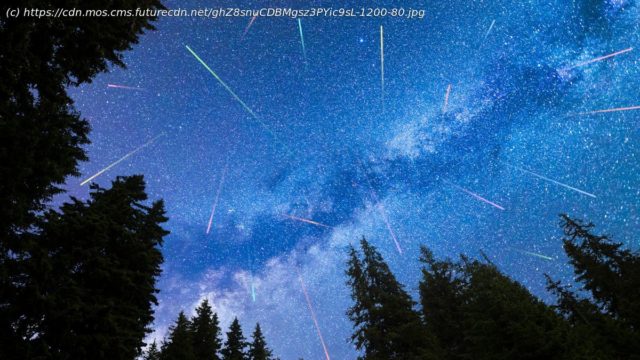The Geminids meteor shower will peak this week – here’s how to get ready to watch and photograph the annual celestial highlight.
Have you ever seen a shooting star? How about two on the same evening? Or even sixty per hour, streaking through the heavens? This year’s Geminids meteor shower is going to be one of 2021’s most spectacular astronomical events, but if you want to see it, or better yet, turn out a decent photograph of it, you’ll need a bit of kit and a bit of planning. Ready to learn something? The Geminids are the dust of ‘3200 Phaethon’, a 5km-wide chunk of rock trailing a field of astronomical debris through which Earth will pass between December 4th and 17th. This will create a spectacular meteor shower that’ll be visible from so many places that we’re expecting to see plenty of photographs. The Geminids are moving at a brisk 78,000mph, and will burn in the atmosphere at an altitude of 63 miles, causing streaks of light easily visible to the naked eye. But how exactly should go about watching or photographing 2021’s Geminids meteor shower? Luckily, we have all the answers, so you can get prepped for this week’s big astronomical show, along with the Ursids later in December. The Geminids meteor shower is visible between the 4th and the 17th of December, with its peak arriving around the 14th. Depending on the weather where you are, it will definitely be worth heading out to watch the skies either side of that peak evening, though. The good news is that the Geminids appear pretty much equally brightly, albeit at different times. If you’re in the Northern Hemisphere, grab a coat and settle in, because the Geminids will be fairly visible all night long, giving you plenty of time to wait for a gap in the weather. Our friends in the Southern Hemisphere can catch a few hours’ sleep – peak meteoric activity will happen in the early hours. Set an alarm that sees you in prime position around 2am and you won’t be disappointed. In terms of what you’ll actually see, you can expect roughly one meteor per minute during the Geminid peak, although that’s not actually the number of meteors overall. In fact, the hourly rate of shooting stars will be nearer 100, even if your actual success rate is going to be quite a bit less. Significantly less, perhaps, given the unfortunate timing of this year’s Geminid shower and its coincidence with the state of our more sedate astronomical neighbor, the good old Moon. This will be nearly full on the night of the 14th, and won’t set – in the Northern Hemisphere at least – until nearly 3am. The Moon reflects plenty of light, so it’s going to upset both your night vision and the exposures of any photographs you try to take. True diehards will set their alarms. Don’t look now, though, because no sooner will the Geminids have gone on their way than the Ursids will make an appearance. The Ursids meteor shower isn’t going to be quite as special, but will begin on December 17th and peak on the night of the 22nd of December. The window here is much tighter, so there isn’t much point going out either side of that peak evening – but if the weather doesn’t cooperate for the Geminids, the Ursids could make for a great also-ran prize. A neat astronomical term for you to learn is ‘radiant’, which is the point in the sky a meteor appears to come from. The Geminids’ radiant is the Gemini constellation – that’s not actually where the meteors come from, but it’s a good place to start looking for them. It’s not the only place you should look, though, as the sky will be fairly alive with meteors all night. Don’t know where Gemini is or where to start looking? We’ve got you. The first thing to do is plunder your phone’s app store, because there are plenty of powerful apps out there to help. On the iPhone, we like the Night Sky X app (below, free with in-app purchases), while Android users should look at Star Walk 2 (free with in-app purchases, also available on iOS devices). Both of these apps allow you to view the night sky in glorious Augmented Reality. Usefully, in the event that you still can’t tell the Big Dipper from Polaris, both allow you to type in the name of the constellation you’re looking for, then follow your phone’s on-screen prompts to find it.






